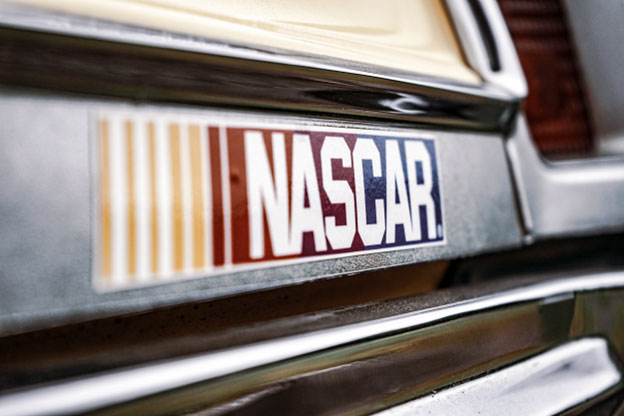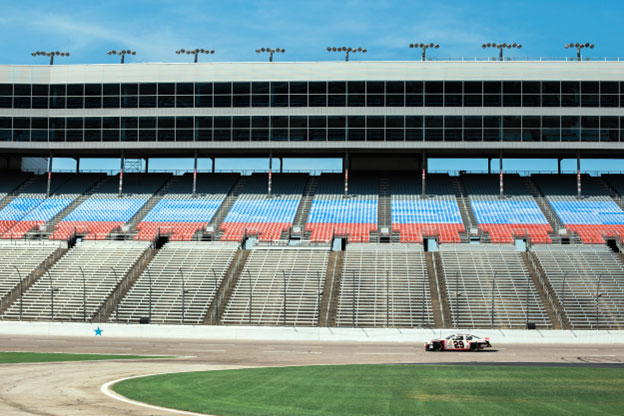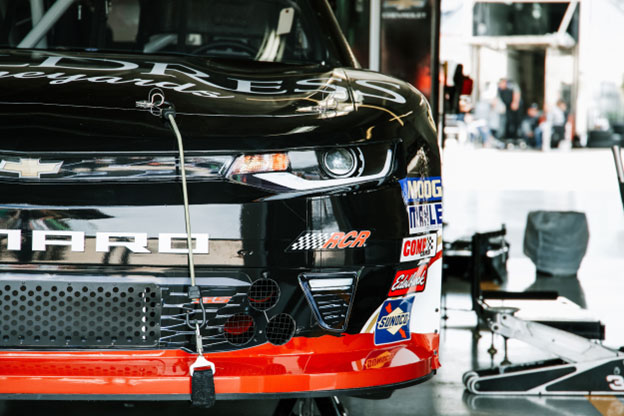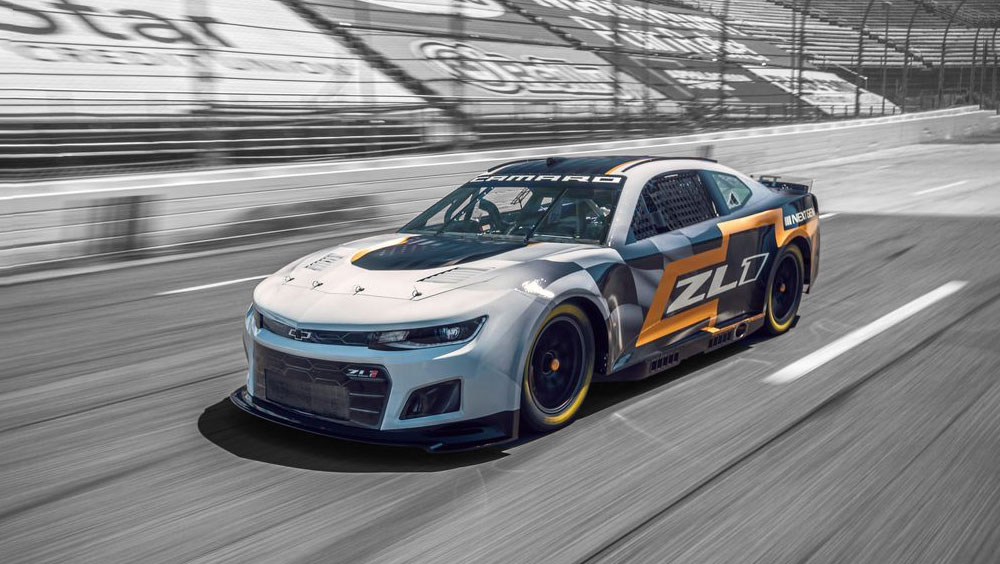Nascar is a sport that has been captivating audiences since the 1940s. It is an incredibly fast and thrilling motorsport, with cars reaching speeds of up to 200 mph on the track. But how fast do NASCAR cars go exactly? This article will explore the speed of NASCAR vehicles and what factors contribute to the top speeds of each car. We'll also look at some of the safety measures implemented to ensure drivers are able to safely navigate the track.

Understanding NASCAR Speed
The Need for Speed in NASCAR
Speed is an essential factor in NASCAR racing. The cars used by drivers can reach speeds of up to 200 mph (322 km/h) on certain race tracks, and even more on the straightaways. This high speed helps create a thrilling atmosphere for the fans, as well as providing a challenge to the drivers.
High speed also affects the way that races are raced, with teams having to adjust their strategies based on the conditions of the track, such as the temperature and surface.
Factors Affecting NASCAR Speed
The most important factor in determining the speed of NASCAR cars is the type of car. NASCAR cars are divided into three main categories: Sprint Cup Series, Xfinity Series, and Camping World Truck Series. Each series has its own set of rules that determine the specifications for each car, including engine size, horsepower, and weight.
The track layout also plays an important role in determining the speed of a NASCAR vehicle. Tracks are designed with curves and straights that can reduce or increase the speed of cars depending on the layout. The condition of a track's surface can also affect the speed of a car, with worn-out tracks offering less grip and thus slower speeds.
NASCAR cars also feature an aerodynamic design, which helps to reduce drag and increase speed. The shape of the car, along with its spoiler and other components, helps to reduce air resistance so that the car can reach higher speeds.
NASCAR Car Specifications
Engine Power
NASCAR cars are built for speed, and they have the power to reach very high speeds. NASCAR vehicles use specially built engines that are designed to produce a tremendous amount of horsepower in order to achieve maximum performance on the track.
These powerful engines are typically V8s with massive displacement and compression ratios, with some of the higher-end models boasting over 900 hp. NASCAR engines are built to run on a special type of fuel that is blended specifically for racing.
Aerodynamics
Aerodynamics is a crucial factor in determining the speed of NASCAR cars. The shape of the car, along with its spoiler and other components, helps to reduce air resistance so that the car can reach higher speeds. The design of the car also helps to create downforce, which pushes the car into the ground and gives it a better grip on the track. The aerodynamic design also helps to reduce drag and increase speed.
Safety Measures
Safety is paramount in NASCAR racing, and many measures are taken to ensure that drivers can safely navigate the track. The cars are built with safety features such as roll cages, side impact bars, and head and neck restraints to protect the driver in the event of an accident. Race tracks also feature a number of safety measures such as guard rails, tire barriers, and catch fences to reduce the impact of a crash.

Track Types and Speeds
Types of NASCAR Tracks
The top speeds of NASCAR vehicles depend on the type of track they are racing on. On oval tracks, NASCAR cars can reach speeds up to 200 mph. This is due to the long straightaways that allow drivers to get up to speed quickly and maintain it for an extended period of time.
On road courses, cars may not exceed the same speeds as on an oval track, but they must be able to accelerate quickly and corner well. Road courses require drivers to be more precise with their driving techniques in order to maximize their speed.
Record Speeds
The fastest recorded speed on a NASCAR track was recorded at Talladega Superspeedway in 2020 when Aric Almirola set a new record by hitting an incredible 204.545 mph.
The second fastest speed was recorded at Daytona International Speedway in 2019 when Ryan Blaney traveled 203.985 mph on the track. The third fastest speed was set at Michigan International Speedway in 2018 by Joey Logano, who reached 202.156 mph on the track.
The Evolution of NASCAR Speed
Historical Speed Milestones
The speed of NASCAR cars has progressed significantly over the years. As technology and engineering have advanced, so too have the capabilities of these powerful vehicles. It is generally accepted that the top speed of a NASCAR car is around 200 mph, although this number can vary depending on track conditions and other factors.
In the 1930s, when stock car racing first began in the United States, speeds were around 85 mph. By the 1950s, speeds had increased to over 100 mph, and by the 1960s they had reached over 125 mph. By the 1970s, speeds were reaching upwards of 140 mph and by the 1980s, drivers were able to reach 150 mph in their cars. In the 1990s, speeds began to increase significantly and cars were able to reach 160 mph. In the 2000s, speeds continued to increase and peaked at around 200 mph.
Technological Advancements
Technology has played a major role in pushing NASCAR car speeds to new limits over the years. Today, NASCAR cars maximize performance by utilizing cutting-edge technologies such as lightweight composite bodies, advanced aerodynamics, and high-performance engines. This technology has helped to increase speed while maintaining safety standards.
The top speed of a NASCAR race car has been steadily increasing since the early 2000s due to advances in technology and engineering. The introduction of new safety measures, such as the Car of Tomorrow chassis, has also helped to increase speeds while ensuring driver safety. NASCAR continues to strive for faster lap times and higher top speeds by utilizing the latest in technology and engineering advancements.

How NASCAR Speed Compares
Comparing NASCAR Speed to Other Motorsports
When it comes to speed, NASCAR drivers are at the top of the pack. Many people are surprised when they hear that NASCAR cars can reach speeds of up to 200 mph on the track and even faster during qualifying runs. This level of speed is unprecedented in other racing disciplines like Formula 1 or IndyCar.
In Formula 1, cars typically reach around 230 mph during qualifying sessions but this speed is not sustained for the duration of the race. Similarly, IndyCar cars reach speeds of around 220 mph on the straights but are limited to around 180 mph on the turns due to safety concerns.
The speeds achieved by NASCAR drivers are a testament to their skill and dedication to pushing the boundaries of speed. By utilizing cutting-edge technology and engineering advancements, NASCAR drivers continue to set new records.
Conclusion
Speed has always been a defining characteristic of NASCAR race cars, with drivers competing to be the fastest around the track. Over the years, advances in engine technology, aerodynamics, and tire compounds have enabled cars to reach ever-increasing speeds on the track. Today, top speeds for NASCAR cars can exceed 200 mph at some tracks.
These high speeds add an element of excitement and spectacle to NASCAR racing, as drivers push the limits of speed while still maintaining a safe level of competition. As technology and engineering continue to advance in the years to come, it is likely that NASCAR will continue to achieve even greater speeds on the track.
Frequently Asked Questions:
What is the top speed of a NASCAR car?
The top speed of a NASCAR car is typically around 200 mph, although this number can vary depending on the track conditions and other factors. NASCAR cars have achieved higher speeds at certain tracks, with some drivers exceeding the 200 mph mark during qualifying runs. Technological advancements such as lightweight composite bodies, advanced aerodynamics, and high-performance engines enable cars to reach higher speeds without compromising safety standards.
How do NASCAR cars achieve such high speeds?
NASCAR cars are able to achieve such high speeds by utilizing cutting-edge technology and engineering advancements. A combination of lightweight composite bodies, advanced aerodynamics, and powerful engines all contribute to the maximum performance that NASCAR cars can reach.

Additionally, safety measures such as the Car of Tomorrow chassis help ensure driver safety while still allowing for higher speeds on the track. With the right combination of technology and engineering, NASCAR cars can achieve top speeds of up to 200 mph.
What are the safety measures in place to protect NASCAR drivers at high speeds?
NASCAR has a strict set of safety regulations in place to protect drivers at high speeds. The most notable of these is the Car of Tomorrow chassis, which was designed with driver safety in mind.
This vehicle features a reinforced roll cage, energy-absorbing seats, and other protective features that help to keep drivers safe during races. Additionally, NASCAR implements speed limits on the track which vary from track to track and are designed to prevent cars from reaching unsafe speeds.
Can NASCAR cars go faster on certain tracks?
Yes, NASCAR cars can go faster on certain tracks. This is due to the unique characteristics of each track, such as its layout, banking, and surface type. For example, drivers can reach higher speeds on tracks with fewer turns due to their more straightaways.
Additionally, high-banked tracks enable cars to maintain speed through the corners thanks to increased grip from the banking. Finally, the type of surface can have an effect on speeds, with asphalt providing more grip than concrete.


